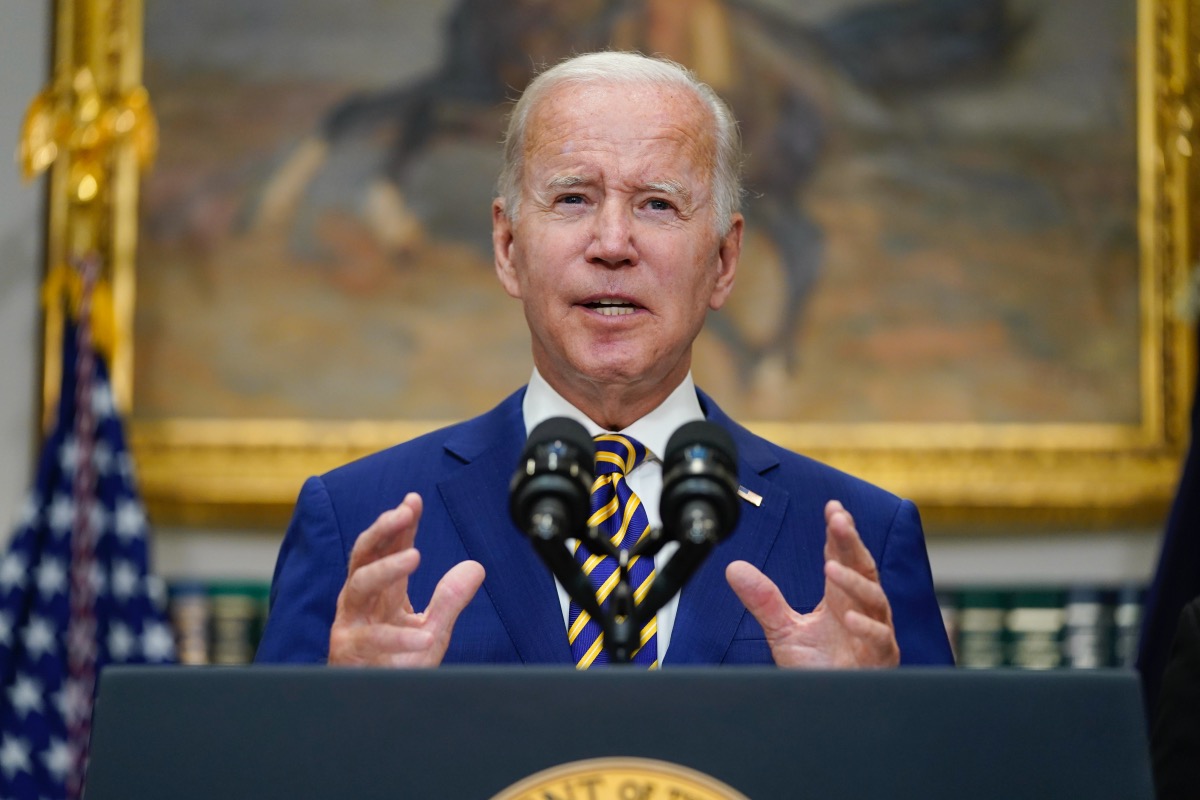

President Joe Biden speaks about student loan debt forgiveness in the Roosevelt Room of the White House, Wednesday, Aug. 24, 2022, in Washington. (AP Photo/Evan Vucci)
WASHINGTON — On Wednesday, President Joe Biden announced the largest student loan cancelation in American history and extended the pandemic reprieve on student loan payments for federal borrowers to December 31.
The administration is canceling up to $10,000 in student loan debt for borrowers making less than $125,000, and up to $20,000 for Pell Grant recipients.
On Capitol Hill, Democrats have spent years pressing the White House to act unilaterally to cancel student loan debt. On the House side, a broad coalition of Democrats support some form of student loan relief, while Republicans stand virtually united in opposing canceling the borrowers’ debts.
In the upper chamber, Senate Majority Leader Charles Schumer (D-NY) famously called on then-President Donald Trump to cancel student loans, while Sen. Elizabeth Warren (D-MA) has worked with the Harvard Legal Services Center to articulate the policy behind student loan cancelation.
Negotiations with the White House over student debt had stalled for months as Senate Democrats negotiated a series of legislative priorities with conservative members of their caucus like Joe Manchin (WV) and Kyrsten Sinema (AZ).
The dramatic passage of the Inflation Reduction Act by a party-line vote during a weekend vote-o-rama two weeks ago emboldened Senate Democrats to try again on student loans. To this end, Sens. Schumer, Warren, and Raphael Warnock (GA) met Friday with White House chief of staff Ron Klain and economics advisor Brian Deese, a follow-up to a meeting in June, before Schumer pulled off a series of legislative wins before the August recess.
Schumer made the final pitch on student loans by phone last night to Biden, per a source familiar with the conversation, with the Senate majority leader calling on the president to cancel as much student loan debt as possible.
Communities of color are particularly impacted by the burden of student loan debt.
> 20 yrs after starting college, Black borrowers usually still owe about 95% of their debt ..Latino borrowers owe around 83% ..white borrower owe approximately 65% of original student debt, according to the @theSBPC.
Reporting by @cristina_corujo https://t.co/GevzLeF5kj
— Pablo Manríquez (@PabloReports) August 24, 2022
Kenneth Romero-Cruz, executive director of the National Hispanic Caucus of State Legislators, has provided a list of three ways the policy could be more equitable to borrowers of color.
“There shouldn’t be income caps for relief, but if there are, then they need to be adjusted for small-area cost of living,” Romero-Cruz said. “Bigger cities tend to be both more expensive and more diverse, especially impacting Latinos and Asian Americans.”
Romero-Cruz also argues that loan forgiveness should cover all student debt, not just undergraduate loans. “Because many Latinos go to community colleges and other lower-cost institutions, their first or principal student loans could be from graduate degrees”—which, Romero-Cruz cautions, are “no guarantee of equal or even greater pay for Latinos.”
Lastly, public servant workers “should not have to wait 10 years to see relief,” Romero-Cruz said. “They need relief immediately because they are living with lower pay.”
***
Pablo Manríquez is the Capitol Hill correspondent for Latino Rebels. Twitter: @PabloReports



[…] Pablo Manríquez, Latino Rebels: Biden Announces Student Loan Forgiveness; Extends Repayment Freeze […]
[…] Pablo Manríquez, Latino Rebels: Biden Announces Student Loan Forgiveness; Extends Repayment Freeze […]